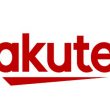Underground chatter
The San Francisco Bay Area Rapid Transit (BART) District has created a profitable business and defrayed the cost of its 800 MHz rebanding effort by leasing its fiber assets and bringing five different commercial mobile services underground.
BART’s effort dates back nearly 20 years when it conceived an initiative to develop a leasing program for the fiber-based SONET ring the transit district had deployed throughout its right of way to power various telecom services. It markets the dark fiber to commercial entities such as cable and telecom operators, an effort that currently brings in $4.2 million per year in revenues from 14 commercial carriers.
Years later, BART turned to the commercial wireless industry. In the late 1990s it developed an above-ground wireless revenue program that involved leasing various BART sites for wireless equipment. It also embarked on a more expensive underground initiative, looking to bring in all of the major operators and create another revenue stream.
“As technology increased, operators were able to transmit below ground. We thought there was no reason why we couldn’t work out some type of agreement to have wireless service underground,” said Chuck Rae, manager of telecommunications revenue with BART and the man responsible for the agency’s telecommunications initiatives.
BART enlisted the help of a third party — in-building wireless vendor Andrew Solutions — to hammer out agreements with the operators, but commercial operators were wary of working with a middle man, Rae said, because it’s another entity in the food chain that needs to get paid. Moreover, the economy went bust after the Internet bubble burst, and the agreement Andrew had secured for BART and other transit agencies, including those in Chicago and Boston, fell apart in 2001 as carriers no longer had the capital to spend.
By 2002, AT&T was the only operator offering underground coverage within the railway to BART’s four busiest stations. It wouldn’t commit to adding more coverage.
“I came to the conclusion that the only way this was going to work is if BART took the approach of becoming the aggregator of these carriers and develop some kind of program we all participate in on an equal basis,” said Rae, a 40-year veteran of the agency. “Above ground, all of these operators are extremely competitive. So we had to make sure everyone was treated fairly and paid their share of the cost equally.”
Today, BART is the first transit district in the nation to bring five competing commercial mobile operators — AT&T, MetroPCS, Sprint Nextel, T-Mobile and Verizon Wireless — underground. But it wasn’t a simple feat.
Rae said the effort to create fair agreements that all operators could agree upon took nearly six years. The last agreement was signed in 2008. “We had to make a chart to explain this to everyone. It got so complex,” he said.
The agreements cover cost sharing, licensing fee payments to BART, maintenance and `warranties, and the designation of one lead operator to oversee all of the cost-sharing agreements. Sprint Nextel agreed to become the lead operator.
BART hired Andrew Solutions, which had already worked with BART in 1995 to install a private wireless system underground, to install a neutral-host distributed antenna system (DAS) to carry the commercial wireless signals underground. But the initiative promised to be exponentially expensive.
“There was this struggle,” said Matt Melester, president of the wireless innovations group with Andrew Solutions. “These systems that go in the subway are very expensive. You have a very limited installation window of about three hours and you have to work at night. And you have to install long cables. It’s not cheap.”
At the same time the private radio side of BART had to undergo a rebanding process associated with the interference problems posed by Sprint Nextel’s iDEN system. The equipment was 15 years old and needed to be replaced. That upgrade required access to a fiber backbone to the tune of $70 million, something Sprint Nextel wasn’t going to cover in the rebanding effort.
Andrew, since it worked with both divisions of BART, helped facilitate a discussion between Rae and the public-safety communications side of the transit agency to strike an agreement to use the dark fiber Rae’s organization had been leasing to commercial operators. In return, the commercial operators would be allowed to tap into radiating cable running under BART’s private wireless system, eliminating the need for extensive cabling throughout the BART system.
Rae calls the move a “win-win” for BART and the commercial operators. For BART, the deal allowed the agency to increase its fiber capacity without spending more money. After the rebanding effort, the private radio system will be P25-compliant and able to accommodate such radios carried by first responders in San Francisco. Meanwhile, the operators never would have been willing to invest the infrastructure, namely the extensive cabling, necessary to bring their own commercial services underground. “There would have never been a payoff date for them,” Rae said.
It’s not clear exactly how much BART is making from the underground initiative, but according to information found in the agency’s proposed budget for fiscal year 2010, it generates a combined total of $1.7 million per year from cell-site revenue. Theoretically, as coverage expands, so will the revenues.
The transit agency also has an agreement with Wi-Fi Rail, which will offer a paid Wi-Fi service to commuters by the end of this year. Wi-Fi Rail is picking up the construction and operating costs, and BART eventually will receive a share of the revenue based on how many people sign up for service.
BART’s intention is to use telecommunications revenue to pay off debt obligations, including the bond issue the agency undertook to construct its private radio system, Rae said.
Such initiatives are coming to the forefront elsewhere because the poor economy has taken its toll on U.S. railways. BART, in particular, is dealing with a projected $128.9 million deficit for its fiscal year 2009/2010 operating budget.
After the Washington Metropolitan Area Transit Authority gave Verizon Wireless exclusive rights within its Metrorail in Washington, D.C., since 1993, the railway now has opened the door to Sprint Nextel, AT&T and T-Mobile. Some 20 stations currently are covered, with plans to increase coverage to the entire Metrorail system by 2012, said Suzanne Peck, the agency’s chief information officer, in a statement.
The wireless contract will generate a minimum of $25 million during the initial 15-year term and an additional $27 million over the five, two-year renewal terms, the railway said.
Washington’s initiative, however, differs from BART’s because the operators created their own consortium, led by Verizon Wireless, to hammer out the agreements and manage the networks. Verizon Wireless, Sprint Nextel, AT&T and T-Mobile are building, operating, maintaining and owning the new wireless network.
Another benefit Metro is receiving is a new public-safety/private wireless network that will be owned by Metro but built, operated and maintained by the four operators. This network will support future plans to launch “The Metro Channel,” which will provide riders with rail and bus service information, news and advertising via monitors in the stations, trains and buses.
Likewise, the Chicago Transit Authority recently allowed its fifth wireless service provider to lease its subway network via an operator consortium. As the agency installed a new two-way radio system in 2005, it also laid the groundwork for the agency to generate additional revenue by leasing its wireless infrastructure to commercial operators.
“As CTA continues to face budget challenges, it is important to pursue initiatives like this that provides benefits for customers while producing revenue for the CTA,” said CTA President Richard Rodriguez in announcing the addition of T-Mobile.
CTA expects to generate a minimum of $15 million over the life of the contracts.
Melester said BART is unique in the fact that no other US railway has taken the underground wireless initiative in-house. Rae said BART’s decision to take these initiatives in-house comes down to control and the ability to continually add new revenue-generating services to the mix.
“There was a lot of creativity in getting to where we are today,” Rae said. “Public agencies are not too business-oriented. We are here to run trains and haul people. Throwing in a business is a complete mindset change. That’s the challenge we’ve overcome at BART.”

















